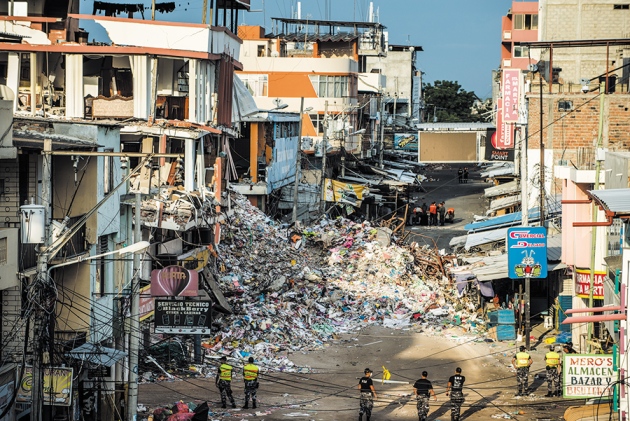Experts of IRDR – Prof. Joern Birkmann (University of Stuttgart, Member of the Science Committee of IRDR) and Ass. Prof. Shuaib Lwasa (Makerere University, Member and Head of the Science Committee of IRDR) – published together with colleagues from the USA and Europe a new piece in NATURE on “Boost the resilience of small- and mid-sized cities” (see Birkmann et al. 2016 in Nature vol. 537: 605-608).
For the past decades, most discussions about urban resilience have focused on large and megacities — earthquake threats to Tehran and Tokyo, and sea-level rise and flood risk to New York, Jakarta and London, for instance. However, Birkmann and co-authors’ analysis of 140 countries shows that small and medium-sized cities are highly susceptible to extreme events, especially in Africa and South Asia, where mid-sized cities are swelling faster than megacities.
Small cities lack the budgets and planning capabilities of larger ones, making their populations more vulnerable to the impacts of floods, storms and droughts. “Poor governance, uneven public investments, lack of basic social and environmental data, and corruption hamper cities’ abilities to function,” the authors write. They call on the UN to recognize this issue in its processes and for funding and goals to build the resilience of small and medium cities in the most susceptible areas.
Prof. Birkmann says: “In order to minimize human suffering, cities need to be able to anticipate, absorb, recover and learn quickly from adverse events. This requires clear priorities towards the most vulnerable and rapidly growing small- and medium-sized growing cities. “
The fastest growing cities are small and medium-sized, and there are many of them. The populations of medium and small cities around the world will rise by more than 32% (469 million people) between 2015 and 2030, compared with about 26% (203 million people) in large (big) and megacities or in other words more than two-thirds of urban population growth between 2015 and 2030 will occur in small and medium sized cities. For example, just under half (49%) of India’s 100 million new urban residents expected by 2030 will be in mid-sized cities like Agartala and Tirupati. A quarter (26%) will add to the nation’s four megacities – Delhi, Mumbai, Kolkata and Bangalore. The new study and comment in NATURE highlights the 15 countries where the most vulnerable urban population lives are: Afghanistan, Yemen, Haiti, Central African Republic, Niger, Nigeria, Cote d’Ivoire, Mauritania, Liberia, Pakistan, Mali, Iraq, Benin, Togo and Gambia.
On the other hand, strengthening the resilience of small and mid-sized cities offers opportunities. Smaller cities are easier to manage than megacities. Risk reduction and climate change strategies embedded now can expand as cities grow. Adverse impacts of extreme events, such as impeded traffic flow and closed businesses, and the benefit of reducing those risks, through improved drainage or flood management, are felt more directly. And the coordination of and dialogues between different groups are more feasible in small cities, says the study.
Congratulations from IRDR!
